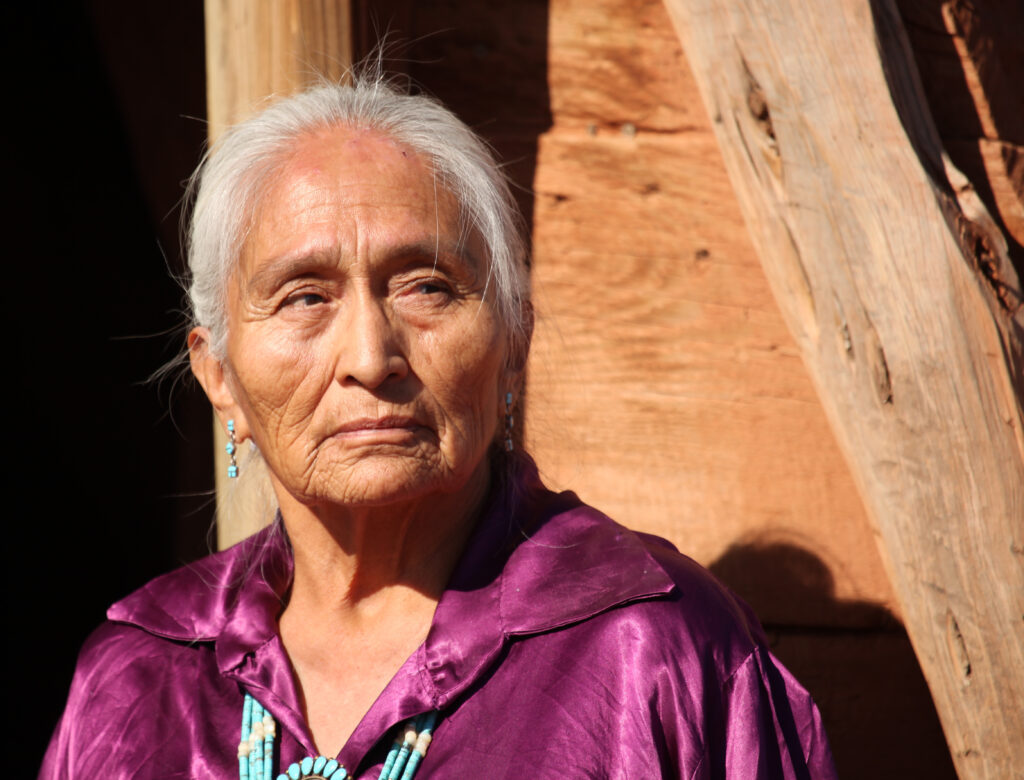Mention Native American health concerns and many people will think of diabetes or kidney disease. Those issues tend to get the biggest spotlight when it comes to Native health. But Alzheimer’s or dementia? You won’t hear quite as much about cognitive decline issues – even though they’re on the rise in Tribal nations.
One reason Alzheimer’s cases are increasing in Indigenous nations is a positive one: American Indians are living longer. In the 1940s, life expectancy in a Tribal community was a mere 51 years of age. Tribal members simply didn’t grow old enough for dementia to become a prominent issue. Today Indigenous life expectancy is still lower than the U.S. majority population, but elders are now living into their late seventies on average – which means Alzheimer’s disease and other dementias are affecting Indigenous communities more than ever before.
The Facts on Alzheimer’s and Dementia
While the public sometimes uses “Alzheimer’s” and “dementia” as interchangeable terms, Alzheimer’s is just one of several brain diseases that can cause dementia. Alzheimer’s patients suffer from the degeneration and death of brain cells and connectors, which destroys their memories and mental functions.
Here are a few facts about how these diseases impact tribal communities:
- Alzheimer’s is the fifth leading cause of death for Americans over 65. While most patients are 65 and older, up to 5 percent of people with Alzheimer’s are in their 40s and 50s.
- Future decades will see a sharp increase in tribal members with dementia issues. That’s because tribes will have 300,000 Native elders over 85 by 2050 – up from 42,000 in 2012.
- Currently 1 out of 5 Native people over 45 report increased difficulty in thinking or remembering over the past year, which can be a precursor to dementia.
- Several studies found that American dementia rates were highest in Native Americans and African Americans. Native people have a 35 percent lifetime risk of developing dementia, second only to Black Americans at 38 percent.
- There is no current cure for Alzheimer’s, but treatment can slow the disease progression and improve the patient’s quality of life.

Alzheimer’s is a Community Affair
Someone may have Alzheimer’s disease for several years before dementia develops. Often the first symptom is forgetting new or recently learned information; families and friends sometimes notice memory trouble first. All too often, the initial signs are dismissed as “normal aging.” But identifying the disease early on is critical when it comes to slowing progression.
Consider Matt, who lives off-reservation. On a few visits to his 74-year-old mother Gloria, he notices she has trouble remembering doctor appointments and recalling recent conversations. She sometimes repeats her sentences and seems confused by normal household tasks. Initially he chalks it all up to expected aging changes.
But over the following year, Gloria’s personality changes as well. She is irritable and uncooperative during his visits. Matt notices she’s stopped tending her garden, normally her pride and joy, and she’s too agitated to sit still at a community harvest festival. One night a neighbor calls him after finding Gloria in her front yard, confused as to why she is out there. Matt then learns that another tribal member recently drove his mother home from church when she forgot where she lived.
At this point, Matt takes his mother to the local IHS clinic for an evaluation. She’s diagnosed with Alzheimer’s and treated accordingly, while Matt is connected to caregiver resources. Over time, Gloria needs increasing supervision and care – but the treatment helps extend the length, quality, and comfort of her life.

3 Practices for Better Alzheimer’s Outcomes
As is clear from the above story, Alzheimer’s isn’t just a family affair – it’s often a community one as well. The behavioral and cognitive changes can affect family members, coworkers, and caregivers; local clinics, churches, and community centers may play a role in identifying and assisting tribal members who are having trouble.
There’s no simple solution to dementia – but the following 3 practices can help Native patients enjoy better outcomes:
- Ability to identify the earliest signs of Alzheimer’s disease. People suffering from any dementia may not understand or notice their initial changes, which makes general awareness in others crucial. The sooner families can connect their loved ones to treatment to slow disease progression, the better.
- Culturally respectful care. As with all things tribal health, American Indian elders and families need supportive, compassionate care that is culturally meaningful. Any physician or nurse who treats American Indian patients with dementia should be trained in local values and beliefs to ensure elders receive respectful care.
- Treatment of comorbidities. The high rate of diabetes in tribal communities can drive the high incidence of Alzheimer’s disease in Indigenous people. High blood sugar can impair memory; so can high blood pressure. Just as patients with diabetes face potential kidney damage, strokes, blindness, and loss of limbs, they are at higher risk for dementia.
The rising life expectancy for Native American people is a fantastic development, one that can be tracked to the healthcare renaissance revitalizing Native American communities. But the bittersweet side of that increase is a rising demand for compassionate eldercare. A better understanding of Alzheimer’s disease and other dementias is the first step to providing Native elders with the respect, comfort, and quality of life they deserve.


